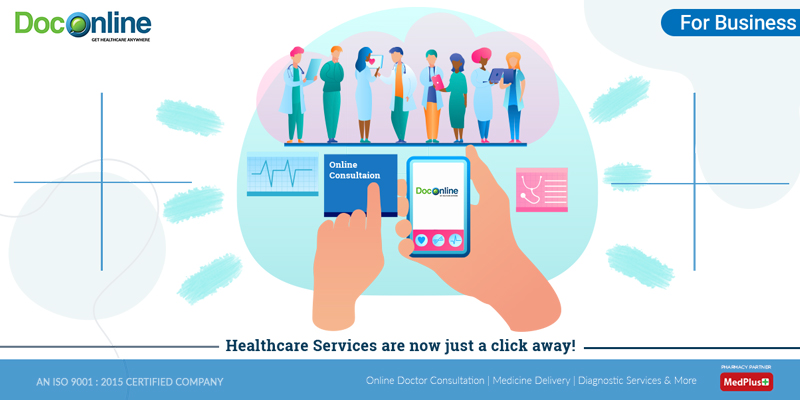The Effect of Subscription Based Healthcare on Traditional Medical Practices
The Effect of Subscription Based Healthcare on Traditional Medical Practices
Blog Article
Comprehending the Cost-Effectiveness of Subscription-Based Medical Care Versions
As the health care landscape develops, subscription-based versions become a compelling alternative, guaranteeing to redefine just how people handle clinical expenses. Examining these models' cost-effectiveness demands a nuanced comparison with traditional insurance, considering both monetary implications and person complete satisfaction. While they offer openness and predictability in costs, concerns continue to be regarding their ability to satisfy diverse health care demands, especially for specialized therapies. The point of views of doctor further complicate this equation, offering a diverse challenge. What does the future hold for these models, and can they truly provide on their promise of obtainable, affordable care?
Overview of Subscription-Based Models
Subscription-based health care versions, often referred to as straight health care or concierge medicine, are significantly acquiring focus as a possible service to inefficiencies within typical medical care systems. These versions operate the principle of offering individuals direct access to health care suppliers through a month-to-month or annual fee, bypassing the demand for traditional insurance policy mechanisms. This arrangement aims to simplify patient-provider interactions by minimizing management concerns, which commonly prevent timely and personalized care.
At the core of subscription-based models is the focus on a more customized client experience. Patients gain from enhanced accessibility to their physicians, frequently including next-day or same-day consultations, expanded consultation times, and straight interaction networks such as phone or video phone calls. This version fosters a proactive approach to healthcare, where carriers and people can collaboratively concentrate on preventative care and chronic illness management.

Price Contrast With Conventional Insurance Policy

Among the main economic benefits of membership versions is openness in prices. Patients pay a predictable cost, which can streamline budgeting and economic preparation. Furthermore, these versions typically eliminate co-pays and deductibles for protected solutions, decreasing out-of-pocket costs. Conversely, traditional insurance policy may be much more beneficial for individuals calling for specialized treatment or costly therapies not covered under a membership design, as they profit from the broader protection network and cost-sharing mechanisms.
However, cost-effectiveness is context-dependent. While registration versions might provide financial savings for those primarily requiring key care, individuals with chronic problems or specialized health care demands might discover conventional insurance policy a lot more detailed. Assessing particular healthcare demands and prospective usage is critical in determining the most cost-effective choice for people.
Influence On Client Complete Satisfaction
Individual satisfaction within subscription-based medical care resource designs commonly reflects a significant improvement over typical insurance systems. Unlike typical systems, where patients may experience hold-ups in receiving treatment, subscription-based designs guarantee more direct and prompt communications with healthcare suppliers.
Additionally, the openness in costs connected with subscription-based medical care eases the typical aggravations connected to unanticipated costs and complex billing processes seen in typical insurance policy (subscription he has a good point based healthcare). Clients value knowing the exact economic commitment upfront, bring about enhanced count on and self-confidence in their healthcare administration
In addition, the focus on precautionary treatment and health in membership versions adds to improved health end results, even more boosting individual fulfillment. By concentrating on recurring health care as opposed to anecdotal care, people experience an even more alternative and continual medical care trip.
In addition, the enhanced provider-patient relationship fostered in these models, identified by even more time spent per client and personalized attention, plays a vital role in raising individual satisfaction degrees, as individuals really feel truly looked after and comprehended.
Supplier Experiences and perspectives
From the provider's viewpoint, subscription-based health care versions supply a transformative technique to providing medical solutions. These designs highlight a preventative and proactive health care approach, enabling companies to concentrate on comprehensive individual care without the restrictions of conventional fee-for-service plans (subscription based healthcare). This change in emphasis commonly results in enhanced client outcomes and boosted company fulfillment, as medical care experts can designate even more time and resources to client engagement and customized care plans
Moreover, membership designs assist in foreseeable income streams, which improve monetary stability for doctor. This predictability permits boosted source planning and appropriation, adding to a much more effective health care delivery system. Carriers can purchase team training, modern technology, and infrastructure improvements, consequently enhancing the quality of care offered.
Nonetheless, the change to subscription-based models is not without difficulties. In spite of these obstacles, lots of providers find that the benefits of increased person interaction and structured operations surpass the preliminary challenges, making subscription-based versions an attractive alternative.
Future Prospects and Obstacles

A key difficulty is governing conformity, as subscription versions must stick to progressing medical Homepage care plans and insurance policy demands. This demands continual adaptation and advancement to guarantee alignment with lawful standards. In addition, incorporating these versions right into existing health care facilities can be complicated, calling for considerable financial investments in innovation and training.
There is also the possible risk of creating inequities in health care gain access to, as registration models may prefer those who can afford them, leaving vulnerable populations underserved. Resolving this calls for thoughtful consideration of pricing approaches and subsidy mechanisms to ensure inclusivity.
Final Thought
Subscription-based health care models offer a sensible choice to traditional insurance by offering monetary predictability and openness, specifically benefiting individuals with persistent problems or frequent medical care demands. The cost-effectiveness of these designs is contingent upon specific healthcare usage patterns and conditions.
Subscription-based healthcare models, in some cases referred to as straight main treatment or attendant medication, are progressively getting focus as a potential option to inefficiencies within typical healthcare systems. Unlike typical systems, where people could experience delays in receiving care, subscription-based designs ensure even more prompt and direct interactions with medical care companies.
These designs emphasize a preventative and proactive health care method, enabling carriers to focus on detailed person care without the constraints of typical fee-for-service plans. As these designs continue to gain grip, they use the prospective to revolutionize individual access to care, streamline service delivery, and enhance healthcare spending.Subscription-based healthcare models present a viable alternative to conventional insurance by providing economic predictability and transparency, particularly profiting people with persistent problems or regular health care needs.
Report this page